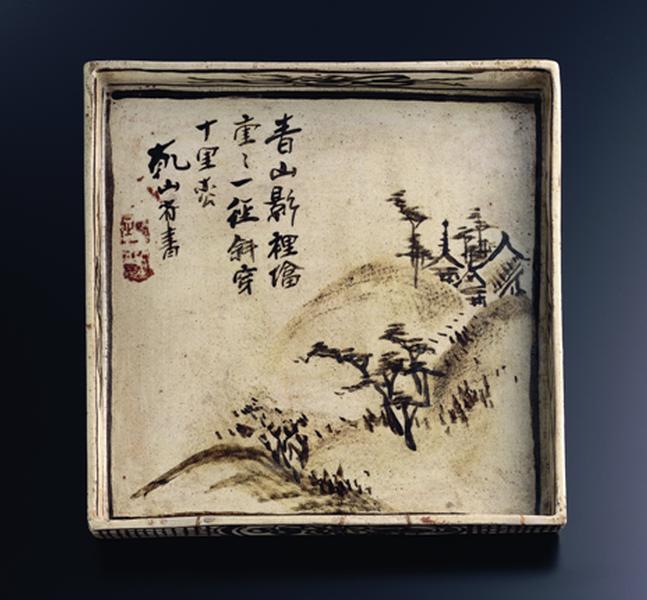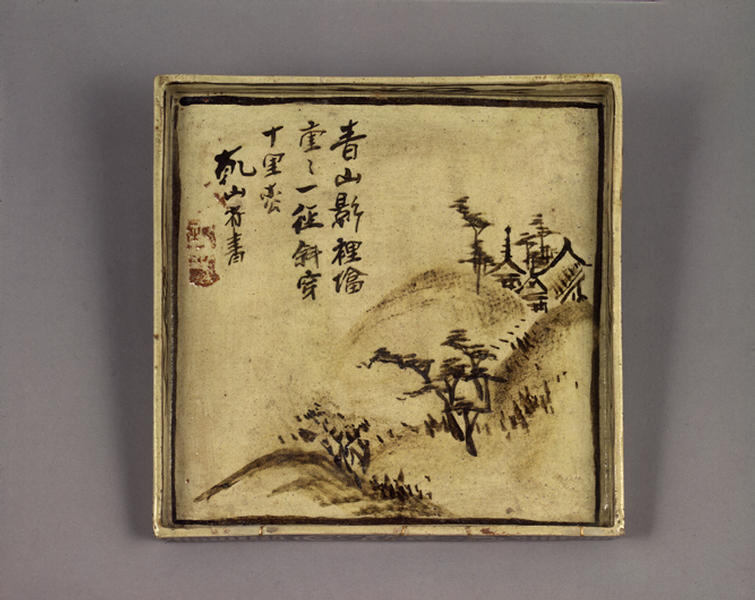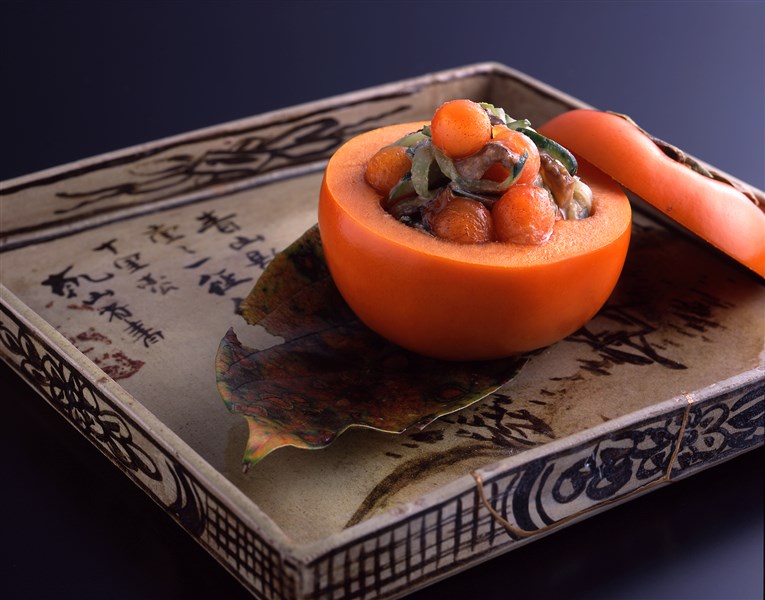銹絵楼閣山水図角皿
- 江戸時代
銹絵楼閣山水図角皿
銹絵楼閣山水図角皿 一枚 図録解説
人を寄せつけぬ深山。永々と松が続き、遥か彼方の高山に、寺院でしょうか、塔と僧堂の伽藍が聳え、清浄閑寂なる空気が漂ってきます。かなり崩れていますが、「尚古」(朱文方印)「陶隠」(白文方印)の型摺印が捺されています。表面内側の縁際には升取り線を巡らし、側面の意匠は、内側に板襷蔓文、外側には円窓内に花文、窓外には格子文が描かれています。
着賛の漢詩は乾山自身が作詩したと思われがちですが、実はそのほとんどは当時中国から入ってきた『圓機活法(えんきかっぽう)』という漢籍からの引用であったことがわかっています。
青山影裡
重~一斜穿
十里枩(松)
Square Dish with Landscape and Pavilion Design
Square Dish with Landscape and Pavilion Design
These deep mountains seem to exclude human beings. The pine trees continue on and on. On the tall mountain in the distance, we see what may be a temple, with a tower and meditation hall. The atmosphere is tranquil and pure. The impressed "Shoko" square relief seal and "Toin" square intaglio seal are visible, if not too clear. Where the inner surface meets the standing rim, a square line has been drawn, defining the picture plane. The inside of the standing rim has a design of crossed diagonal lines and arabesques; a floral motif inside a cartouche and a lattice design decorate its outside.
While one may be tempted to think that the Chinese poem inscribed on the upper left was Kenzan's own composition, we know that it is a quotation from a Ming poetic anthology, the Yuanji huofa (Jp. Enki kappo), that was available in Japan at the time.


